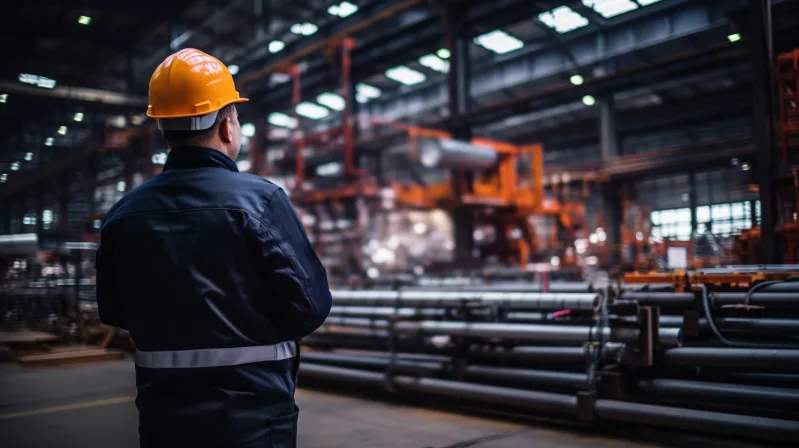In a world where businesses voraciously consume energy, adopting energy-efficient practices is like finding an oasis in a desert. Energy efficiency isn't just about cutting costs; it's a commitment to smarter business operations and environmental stewardship. Business owners stand at the forefront of this change, with many companies reaping tangible benefits from reduced utility bills to enhanced public image. By integrating energy-smart strategies, businesses lighten their ecological footprint and fortify their market position.
Implementing Energy-Efficient Practices in Operations
The first step in making your business more energy efficient is to look for opportunities to optimize operations. This includes the conservation of resources on proven initiatives like recycling and replacing lightbulbs but also running experiments with prototype manufacturers to determine if more costly investments such as upgrading machinery and fleet vehicles will offer the benefits that you need to make your business more sustainable.
Identify Opportunities
To make your business more energy efficient, start by finding areas to improve. Look at how you use resources every day. For example, paper consumption can be huge in some businesses. Paper use drops to nearly zero in a 100% remote company setting. This shows that going digital saves trees and cuts down on energy used for printing and shredding.
Next, examine the physical workspace. Simple changes like adjusting sunlight exposure can impact your energy bills significantly. During summer, blocking direct sunlight keeps spaces cool without overworking air conditioners. Conversely, letting sunlight warm up the office during winter days and covering windows at night reduces heating needs.
Execute Changes
Once you identify opportunities, take steps to save energy daily.
- Replace old light bulbs with LED ones.
- Encourage employees to power down computers when not in use.
These are commonsense measures but they're effective for increasing efficiency.
Case studies show successful implementation leads to lower costs and reduced environmental impact. For instance:
- A retail store switched off display lights after hours.
- An IT firm enabled sleep mode on all devices automatically.
Both saw their electricity bills drop without affecting operations or employee comfort.

Upgrading to High-Efficiency Technology
Tech Impact
Upgrading technology is a big step for energy efficiency. High-efficiency tech can reduce costs and save energy. For example, replacing old lights with LED bulbs cuts power use. This change also lowers heat output in your building.
Using high-efficiency kettles in a cafe can save on electricity bills. These small changes make a difference over time. They help the environment too.
Investment Returns
Investing in new technology needs careful thought about ROI (Return on Investment). A study by IBM shows customers pay more for eco-friendly products. They would spend up to 35% extra.
Businesses that upgrade can advertise their green credentials. This attracts customers who value sustainability. It's not just about saving money but also gaining customer loyalty.
By using laptops instead of desktops, you save 80-90% on electricity costs according to research findings. This makes it clear that upgrading pays off long-term.
Encouraging Employee Participation in Energy Conservation
Employee Engagement
Employees play a key role in energy conservation. Their daily actions can have a big impact on the company's environmental footprint. To get staff involved, it's important to explain why saving energy matters. Show them how their efforts make a difference.
One way to engage employees is through incentive programs. These could include rewards for teams that reduce energy use or competitions between departments. Recognizing individual contributions is also effective.
Monitoring and Reducing Heating and Cooling Expenses
HVAC Efficiency
Heating, ventilation, and air conditioning (HVAC) systems can be energy hogs. They often account for a significant chunk of a business's energy bills. To cut costs, it's vital to monitor these systems closely.
You can start by checking your HVAC equipment regularly. Make sure it is in good working order. Dirty filters or old equipment can waste energy. Replace or clean them as needed.
Next, consider upgrading to an energy-efficient model if your system is outdated. Modern HVAC units use less power to operate but still provide the same level of comfort.
Smart Thermostats
Using smart thermostats is another way to reduce heating and cooling expenses. These devices allow you to set specific temperatures for different times of the day.
For instance, you could lower the heat after hours when no one is in the office. You might also adjust settings based on the season or weather patterns outside.
Smart thermostats help maintain consistent temperatures without manual adjustments all day long.
Promoting Sustainable Transportation Methods
Environmental Impact
Traditional transportation methods often rely on fossil fuels. These contribute to greenhouse gas emissions and air pollution. By understanding this impact, businesses can take steps towards sustainability.
Businesses can encourage carpooling or provide incentives for using public transit. Some might install bike racks or offer a bike-to-work program. These actions reduce the number of vehicles on the road.
Sustainable Practices
Promoting sustainable transportation within a company requires strategy and commitment. There are several ways to integrate these practices into business operations.
Firstly, companies can assess their delivery routes for efficiency. They might also invest in electric or hybrid vehicles for their fleet. This move not only cuts emissions but may also lead to long-term savings on fuel costs.
Secondly, businesses could support telecommuting where possible. Fewer commutes mean less traffic congestion and lower carbon footprints overall.
Benefits and Challenges
Adopting sustainable transportation offers both advantages and obstacles:
- Pros:
- Reduces environmental impact.
- Can enhance company reputation.
- May provide financial savings over time.
- Cons:
- Initial investments can be high.
- Infrastructure changes may be required.
Despite challenges, the benefits of moving towards energy-efficient transport options are clear—both environmentally and economically.

Investing in Renewable Energy and Sustainable Solutions
Renewable Sources
Renewable energy is key for a greener business. Solar, wind, and hydro are popular options. Each has unique benefits.
Solar panels on rooftops cut electricity bills. Wind turbines work well in open spaces. Hydro systems harness water flow for power.
Businesses can choose based on location and need. These resources reduce reliance on fossil fuels.
Financial Benefits
Investing in renewables pays off over time. Long-term savings offset initial costs.
Government incentives often support these investments. Businesses save money and boost their public image.
A strong commitment to sustainability attracts eco-conscious customers too.
Success Stories
Many companies have made the switch to renewables successfully.
- A tech giant powers all facilities with renewable energy.
- A small brewery installed solar panels, reducing its carbon footprint significantly.
These cases inspire others to follow suit.
Optimizing Equipment and Facility Maintenance for Energy Savings
Equipment Upkeep
Regular maintenance is key to keeping equipment running efficiently. Well-maintained machines use less energy, which cuts costs. For example, cleaning air filters in HVAC systems improves airflow and efficiency.
Routine check-ups prevent breakdowns. This saves on both repair costs and the energy wasted by malfunctioning equipment. It's like how a well-tuned car uses less gasoline.
Measuring the Impact of Energy Efficiency Initiatives
Tracking Importance
To see if energy-saving steps work, it’s vital to track their impact. This shows how much energy and money you save. It also reveals your business's environmental impact reduction.
Businesses can set energy benchmarks before starting initiatives. Then compare them with new data after changes are made. This approach helps in understanding which measures yield the best results.
Measurement Tools
Various tools help measure efficiency gains. Smart meters provide real-time power use data. Energy management software analyzes this information for insights.
These tools show trends and peak usage times. They let businesses pinpoint where they can cut down more on energy use or adjust operations for better efficiency.
Data Interpretation
Understanding the data is key to making informed decisions about future initiatives. Look at how energy consumption patterns change over time.
If a particular strategy leads to significant savings, consider applying similar ones elsewhere in your operation.
Conclusion
You've got the blueprint to transform your business into an energy-saving powerhouse. From revamping operations with eco-smarts to getting your team on board with green goals, every step is a leap towards slashing bills and boosting your brand's eco-cred. Embrace high-efficiency tech, keep your heating and cooling in check, and let sustainable travel take the wheel. Renewable energy isn't just a buzzword—it's your ticket to a resilient, future-proof enterprise.
Don't just stand there—act! Measure your energy feats and watch as your efforts pay off, not just in savings, but in setting a standard others will follow. It's time to lead the charge in your industry. Make the switch, inspire change, and let's power up the planet together—one watt at a time. Ready to flip the switch? Your move.


